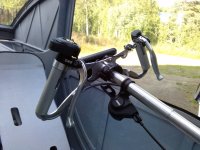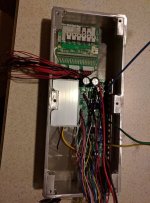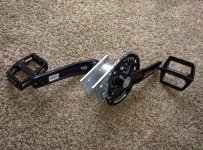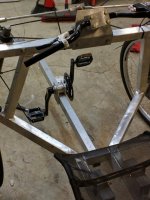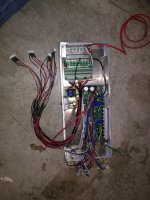After much thinking and finding 10$ headsets with a 1" bore on amazon https://www.amazon.com/Sunlite-Thre...d=1467841796&sr=8-1&keywords=headset+threaded I decided to move those bronze bushings to the upper end of the steering kingpin rods and put the headset bearings on the lower end. Basically, where I should have been in the first place but the difficult to find information and poorly labeled item information on bicycle components had me running for the more standardized industrial taper bearings. Bicycle parts need clearly labeled standardization numbers on every store page. So many competing designs. ASME needs to get involved and straighten them out.
Going to cut the threads off the spindle and tap the end of it for a lower profile way to secure the wheels while saving weight and looking more elegant. While I'm at it I'm going to cut the kingpin 1" round bar steel rod off above where the bicycle headset bearings will mount and weld on a section of thin wall tubing to replace the solid round bar. Might even just replace the entire solid round bar with some stainless 1" OD tube. At the moment the spindles are only tacked into a drilled hole in the round bar. With the cast iron flange bearings and pillow blocks replaced with headset and bushings and the round bar replaced with tubing, I might save about 15 pounds while reducing the ride height significantly as well as the CofG. Only a few hours of work.
Found this for those who need it.
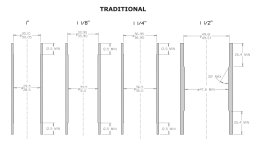
It was in here: https://www.canecreek.com/resources/products/headsets/technical-specifications/headset-tech-specs-rev-e.pdf
Going to cut the threads off the spindle and tap the end of it for a lower profile way to secure the wheels while saving weight and looking more elegant. While I'm at it I'm going to cut the kingpin 1" round bar steel rod off above where the bicycle headset bearings will mount and weld on a section of thin wall tubing to replace the solid round bar. Might even just replace the entire solid round bar with some stainless 1" OD tube. At the moment the spindles are only tacked into a drilled hole in the round bar. With the cast iron flange bearings and pillow blocks replaced with headset and bushings and the round bar replaced with tubing, I might save about 15 pounds while reducing the ride height significantly as well as the CofG. Only a few hours of work.
Found this for those who need it.

It was in here: https://www.canecreek.com/resources/products/headsets/technical-specifications/headset-tech-specs-rev-e.pdf


